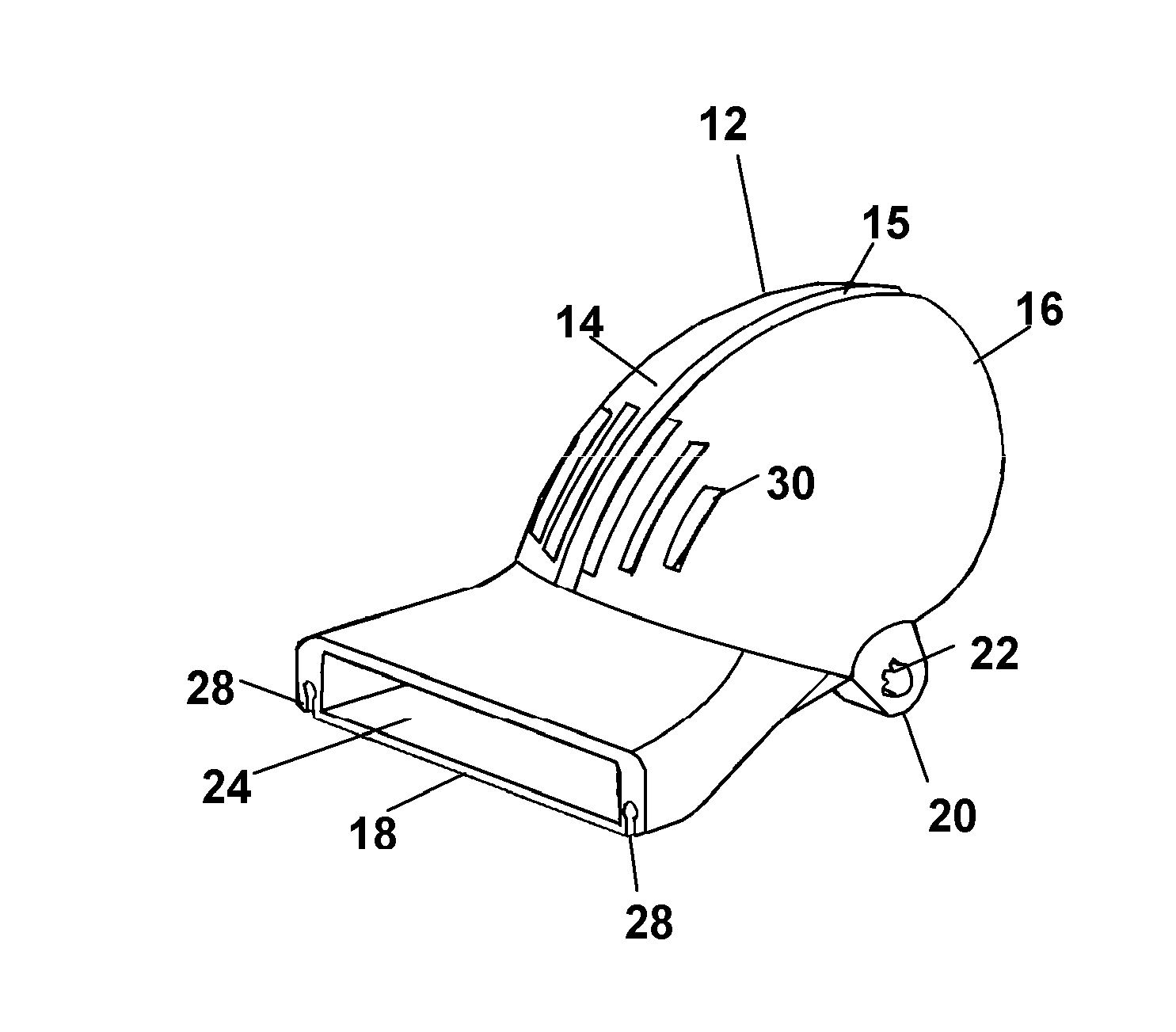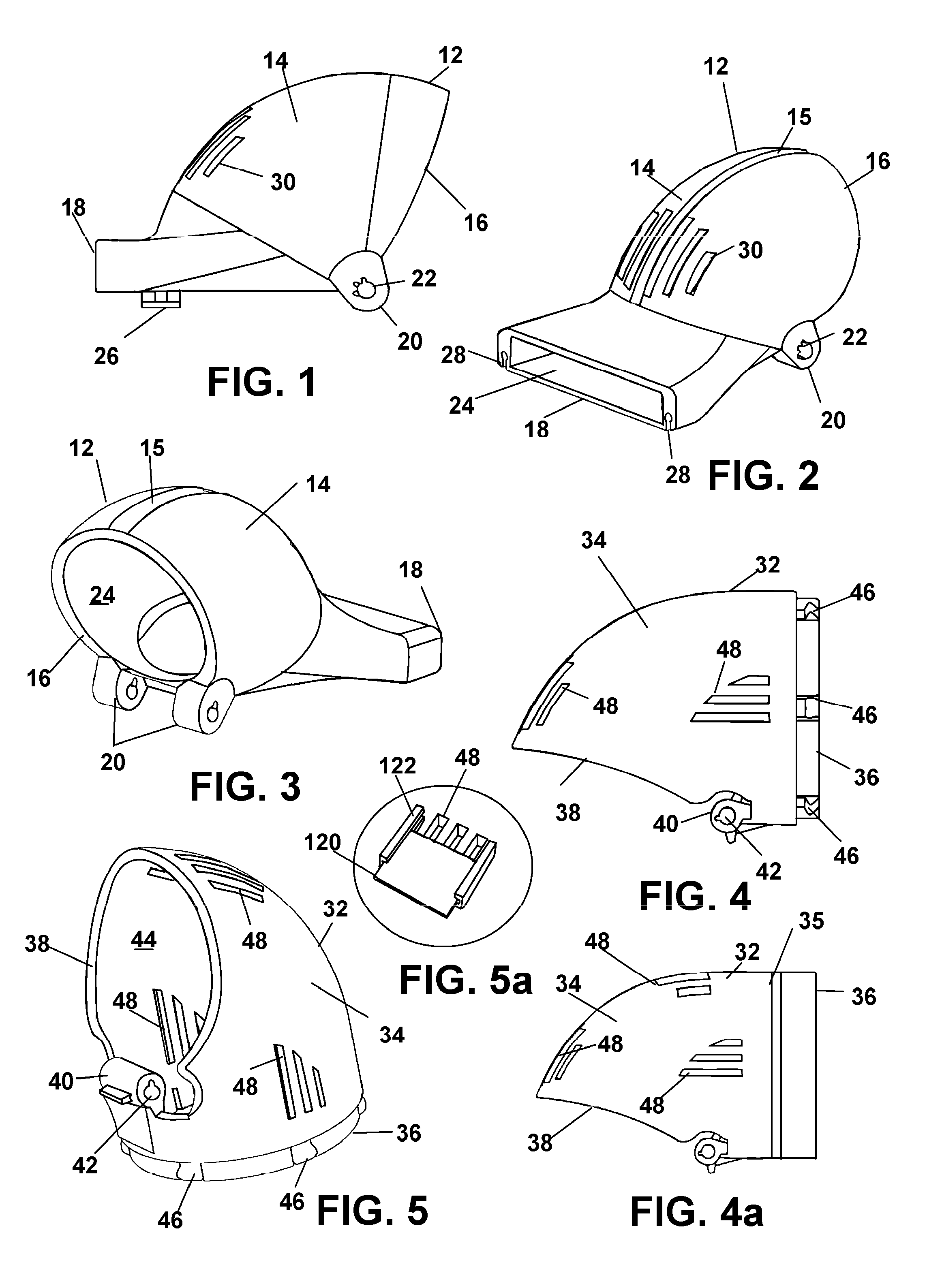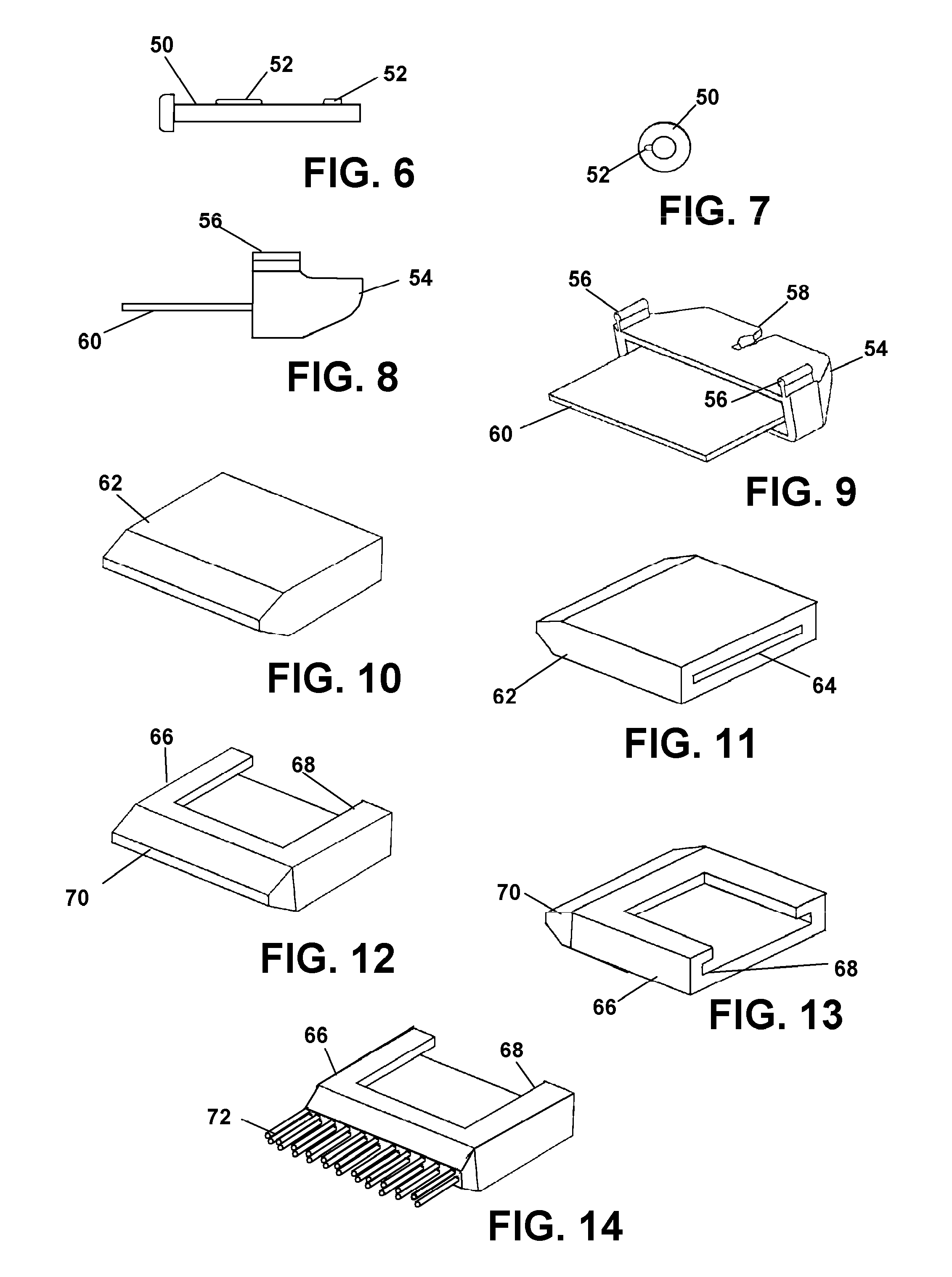As could be imaged, there are many drawbacks with such a tedious process.
First, when applying lotions and serums to the hair by hand, there is often an increased change of the
waste product of the particular
lotion or serum applied.
Such a waste may cause substantial monetary loss to professional hair styling studios wherein many clients are treated on a daily bases.
Second, the employment of a conventional hair dryer additionally falls short.
Further, having healthy cuticles will also result in
long lasting hair styles.
If the
cuticle is brushed or otherwise impacted against its grain, it can cause damage.
As is common in the art because of the lack of a directional exhaust on blow dryers, a stylist inadvertently may direct the blowing air of a hair dryer toward the
cuticle, and thus against the grain of the shingle-like structure, because of the lack of the ability to change the direction and angle of exhausting hot air from the blow dryer.
The resulting high speed
stream of heated air directed along the
hair shaft in the
wrong direction will tend to lift and damage the hair strands and the hair can frizz and become further damaged.
However, positioning a conventional blow dryer to function in this fashion is not so simple.
This is because placing the blow dryer in such a position to exhaust air away from the roots along the axis of the
hair shaft, requires the stylist or individual to hold their arms in an elevated position, and their hands at uncomfortable and unnatural angles to the
forearm.
Such an arm and hand posture, while holding the heavy or bulky blow
drying type hair dryer can
cause injury, can over time
cause injury to
body joints, tendons and muscles, and is inherently very uncomfortable, and tiring.
Additionally, achieving such a position of the hands and arms, to direct hot air exhausting from the blow dryer away from
hair roots and toward the distal hair ends, is simply unattainable for a single individual styling their own hair.
This inherently risks and generally causes strand damage to hair and a frizz look upon
drying.
Or, in order to prevent too much damage to hair strands being dried using conventional dryers held in uncomfortable positions, the user will often limit the
drying time to less than is required for optimum results which may result in slightly damp hair, and is undesirable.
Third, when users are unable to properly direct exhausting air from a dryer correctly away from the
scalp due to posture or
physical limitations, they fall back to the method where they position the blow dryer type hair dryer to exhaust the drying air substantially toward the
cuticle base or root of the hair, the hot air is also directed toward the recipients
scalp or face, wherein burns and discomfort are frequently can occur.
As could be discerned, if a professional stylist were to burn a clients
scalp or face, the business may lose a return
client, and the stylist can possibly lose their job.
However Chan does not solve the problems associated with applying lotions prior to drying or re-positioning the hair dryer to blow with the cuticle grain.
However, neither McAruther nor Prehodka solve the problems noted above.
However, Csavas does not provide solutions to the above noted shortcomings.
Although providing a means for redirecting
airflow without requiring the hair dryer to be repositioned, Fan does not provided a solution to all the above noted problems.
Various limitations of the related art will become apparent to those skilled in the art upon a reading and understanding of the specification below and the accompanying drawings.
 Login to View More
Login to View More  Login to View More
Login to View More 


